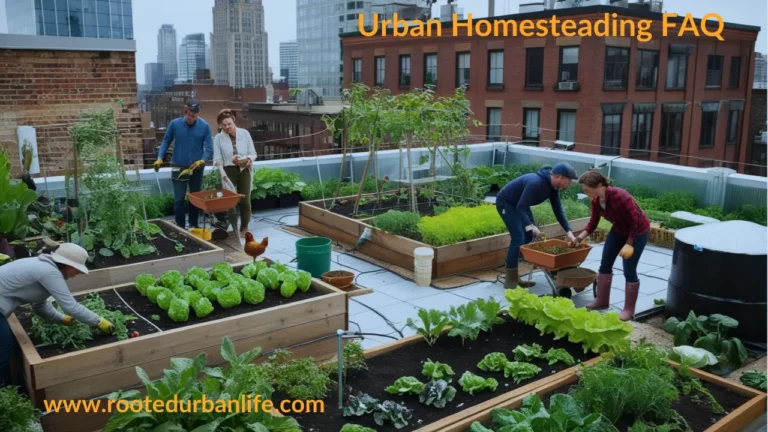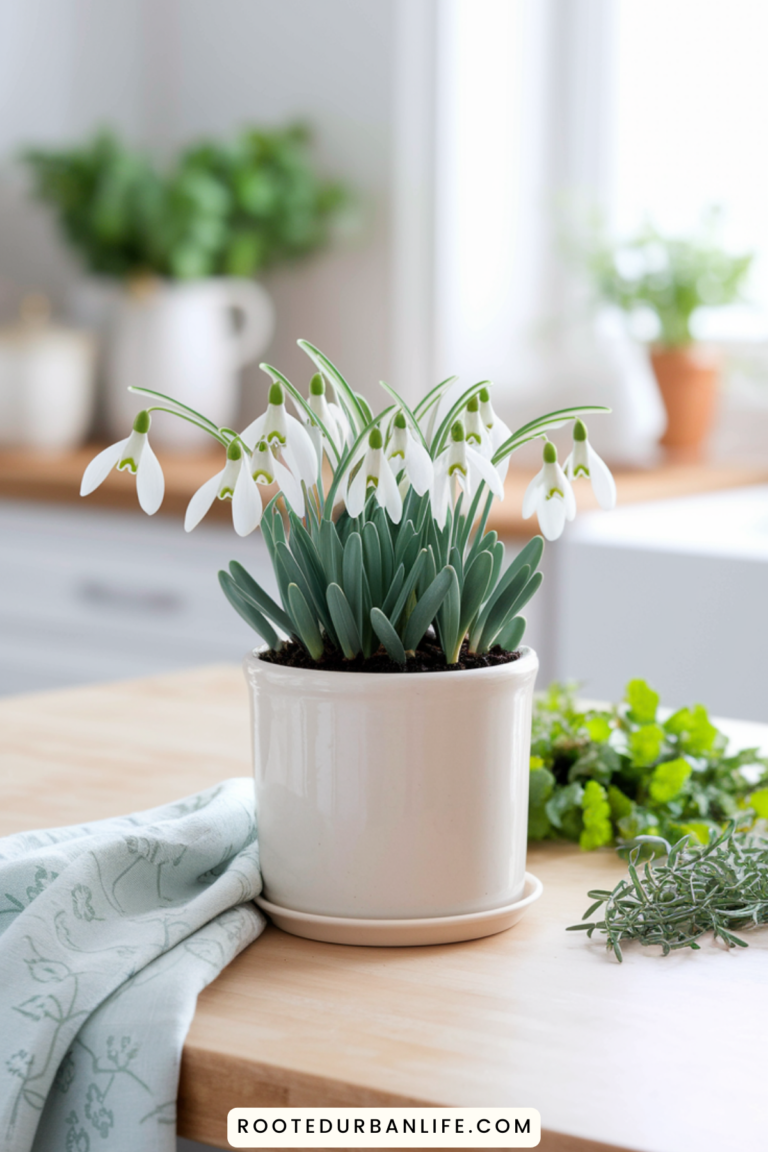Beginners Guide to Harvesting and Storing Fresh Herbs
Gathering and storing fresh herbs can enhance your cooking, but it often comes with challenges. Whether you’re a gardener or simply looking to boost flavor in your meals, knowing how to harvest and preserve herbs is essential. This guide will outline practical steps for effectively gathering and storing herbs, along with simple recipes to make the most of your harvest.
Read more: Beginners Guide to Harvesting and Storing Fresh Herbs| This guide provides practical steps for harvesting, storing, and using fresh herbs to enhance your cooking. From ideal harvesting times to various preservation methods, including drying, freezing, and crafting, you’ll discover how to make the most of your herb garden. Additionally, you’ll find easy recipes and suggestions for experienced gardeners to grow their skills. |
Harvesting Herbs
To enjoy the best taste from your herbs, it’s important to pick them at the right time.
- Morning is best: Wait until the dew has dried, but pick before the sun gets too hot.
- Use sharp tools: Cut the stems with sharp scissors or pruning shears. Remember to leave at least two-thirds of the plant.
- Prune wisely: For herbs like basil, trim just above a leaf pair to help the plant grow bushier.
Regularly trimming your herbs can encourage more growth, so don’t hold back on pruning.
Storing and Preserving Herbs
To make your herbs last longer, it’s important to store them correctly.
Fresh herbs can stay fresh in your fridge for about a week. Try placing them in a glass of water and covering the top loosely with a plastic bag. Change the water every few days for best results.
You can also wrap herbs like parsley, cilantro, and mint in damp paper towels and put them in a resealable plastic bag.
If you have extra herbs, drying them is a great option. Gather a bunch of stems, tie them with string, and hang them upside down in a warm, dry area.
Once fully dried, keep them in airtight containers away from sunlight. Dried herbs often have a stronger flavor, so you may need to use less when cooking.
You can also use a dehydrator or your oven on a low setting (around 180°F or 82°C) to dry herbs. Once fully dried, store them in airtight containers away from light and moisture for long-lasting flavor.
Herbs such as oregano and rosemary can become even more flavorful when dried, making them perfect for hearty winter meals.
Get creative by using your herbs for crafts too, like making scented sachets, herbal candles, or homemade soap, which can make thoughtful gifts.
Freezing Herbs is another great option. Chop fresh herbs, place them in ice cube trays, and fill with water or olive oil. Once frozen, transfer the cubes to a resealable bag. This is perfect for adding directly to soups or sauces.
For sturdier herbs like thyme or rosemary, wash, dry, and freeze whole sprigs in a freezer-safe bag. This method preserves their flavor and aroma.
Fun and Easy Recipes
Adding fresh herbs to your meals can create exciting flavors. Here are some easy recipes to explore.
- Herb-Infused Oils: Take a bottle and fill it with olive oil. Add fresh herbs like rosemary, thyme, or basil. Let it rest for a week. This oil works great for salads, pasta, or as a drizzle on bread.
- Mint Lemonade: To make a refreshing drink, crush fresh mint leaves and mix them into your lemonade. It’s an ideal choice for hot summer days.
- Basil Pesto: Blend fresh basil with garlic, pine nuts, Parmesan cheese, and olive oil for a fast pesto. Use it on pasta, spread it on sandwiches, or serve it as a dip.
- Herbed Cookies and Ice Cream: You can add rosemary to cookie dough or infuse lavender into ice cream. This will give familiar treats a new twist.
- Herb-Infused Ice Cubes: Place whole or chopped herbs in an ice cube tray, fill it with water, and freeze. These cubes will bring extra flavor to your drinks. Mint cubes are perfect for lemonade, while basil cubes can enhance iced tea.
- Herbal Teas: Make calming teas by steeping fresh or dried herbs like mint, lemon balm, or chamomile in hot water. Strain it and enjoy a soothing cup. This is an easy way to use up any leftover herbs.
- Herb-Infused Butter: Soften 1 cup of unsalted butter and mix in finely chopped fresh herbs (such as chives, parsley, or dill). Roll into a log in parchment paper and refrigerate. Use it on vegetables, bread, or meats.
- Herbal Salad Dressing: Blend together 1 cup of fresh herbs (like parsley or cilantro), 1/4 cup olive oil, 2 tablespoons vinegar (balsamic or apple cider), salt, and pepper to taste. This makes a vibrant dressing for salads or grain bowls.
- Herb-Seasoned Roasted Vegetables: Toss chopped seasonal vegetables (like carrots, bell peppers, or zucchini) with olive oil, salt, pepper, and a mix of dried herbs (like oregano, thyme, and rosemary). Roast at 425°F (220°C) for 20-25 minutes.
- Herb-Infused Water: Add fresh herbs (such as mint, basil, or rosemary) to a pitcher of water. Let it steep in the fridge for a few hours for a refreshing drink.
- Herb Smoothies: Add a handful of fresh herbs like spinach or mint to your favorite smoothie recipe. They provide additional nutrients and a refreshing flavor.
- Savory Herb Focaccia: Mix chopped fresh herbs (like rosemary or thyme) into the dough for homemade focaccia. Top with sea salt and a drizzle of olive oil before baking for an aromatic bread.
- Herb Jelly: Use fresh herbs like basil or mint to make a flavorful jelly. Combine equal parts of herb-infused water, sugar, and pectin. Boil, then pour into sterilized jars and seal.
Next Steps for Experienced Gardeners
You are now ready to take your gardening skills to a new level. Here are some suggestions:
- Explore Unique Varieties: Experiment with growing rare or specialty herbs such as lemon balm, epazote, or shiso. These can add unique flavors to your culinary creations.
- Companion Planting: Study and implement companion planting strategies. For example, plant herbs like basil alongside tomatoes to enhance growth and flavor while deterring pests.
- Herb Seed Saving: Learn how to save seeds from your herbs to grow next season. This not only preserves unique varieties but also saves money.
- Hydroponic or Aquaponic Herb Gardening: Dive into hydroponic or aquaponic systems for growing herbs. This method can increase growth rates and allow for year-round herb production.
- Fermentation: Explore fermenting herbs to create unique flavors and health benefits. Experiment with recipes for fermented herb condiments, sauces, or pickles.
- Utilizing Herbs in Natural Remedies: Research and experiment with using herbs for natural remedies or herbal teas. Focus on understanding the medicinal properties of herbs like chamomile, echinacea, or lemon balm.
- Herb Garden Workshops: Host or participate in workshops to share knowledge and learn from other experienced gardeners. Topics can include advanced propagation techniques or herb crafting.
- Documenting Your Gardening Journey: Keep a gardening journal to document your experiences, including successful and unsuccessful methods, growth patterns, and seasonal changes. This can help refine your practices over time.
- Create a Culinary Herb Kit: Develop a curated culinary herb kit containing your most-used herbs along with recipes. This can also be a great gift for other cooking enthusiasts.
Frequently Asked Questions
What are the ideal herbs to grow on a balcony in different climates?
When choosing herbs for your balcony, consider your climate. Here are some suitable options:
- Warm Climates: Basil, thyme, rosemary, and oregano thrive in sunny, hot areas.
- Cool Climates: Mint, chives, and cilantro grow well in cooler temperatures, often tolerating some shade.
- Temperate Climates: Parsley and dill adapt well and can be grown year-round in moderate conditions.
What unique ideas can I use to create an herb garden on a small balcony?
Creating an herb garden on a small balcony can be fun. Here are some ideas:
- Wall Planters: Use vertical wall planters to save space and display plants nicely.
- Hanging Pots: Suspend pots from the railing or ceiling to utilize vertical space.
- Tiered Shelves: Set up tiered shelving units to stack pots and create levels for your herbs.
How can I select the right containers and planters for herbs on balcony railings?
Choose containers that suit your space and your herbs’ needs. Consider the following:
- Size: Select pots that are deep enough for roots to grow. A depth of 6-12 inches is usually good.
- Material: Clay, plastic, or metal pots work well. Ensure they have drainage holes.
- Railing Planters: Use specially designed railing planters that fit securely on your balcony railings.
What basic tips should beginners know for starting a patio herb garden?
If you’re new to gardening, here are essential tips:
- Start Small: Begin with a few herbs to learn how to care for them.
- Light Requirements: Check how much sunlight your balcony gets and choose herbs that fit those conditions.
- Soil Quality: Use high-quality potting mix for better growth.
How should I plan my watering schedule for herbs on my balcony?
Watering your herbs properly is key to their health. Follow these guidelines:
- Check Soil Moisture: Stick your finger in the soil; if it’s dry two inches down, it’s time to water.
- Morning Watering: Water in the morning to prevent evaporation and ensure the plants have moisture throughout the day.
- Consistency: Aim for consistent watering, but avoid overwatering, which can lead to root rot.
What are effective methods for arranging a vertical herb garden on a balcony?
Maximize your space by arranging herbs vertically. Here are some methods:
- Ladder Planters: Use a wooden ladder as a rustic stand for pots, placing herbs at different heights.
- Pocket Planters: Consider fabric pocket planters that you can hang on walls for easy access.
- Shelving Units: Install simple shelving units to hold multiple pots and make use of available vertical space.
Key Takeaways
| Harvesting Tips: Pick herbs in the morning after the dew has dried and use sharp tools for clean cuts. Storage Methods: Keep fresh herbs in water or damp paper towels, dry them for long-lasting flavor, or freeze them for future use. Creative Uses: Enhance your cooking with herb-infused oils, refreshing drinks, and unique recipes like herb jelly and savory focaccia. Advanced Techniques: Experienced gardeners can explore unique herb varieties, companion planting, and hydroponic gardening. |
Whether you’re just starting or looking to expand your herb garden, the right techniques and creativity can make a world of difference.
We invite you to share your own experiences with herbs in the comments below.
What are your favorite herbs to grow and cook with? Do you have a favorite recipe?
If you enjoyed this guide, don’t forget to follow our blog for more tips, recipes, and inspiration to help you thrive in your urban gardening journey.
Other Posts You Might Enjoy
How To Start A Balcony Herb Garden: Essential Tips for Beginners





